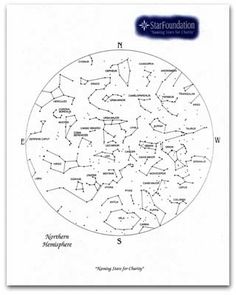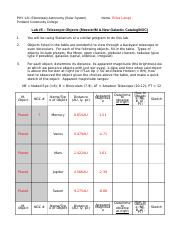Astronomical system of units pdf
see Astronomical Unit. Azimuth. Angular distance measured clockwise around the observer’s horizon in units of degrees; astronomers usually take north to be 0 degrees, east to be 90 degrees, south to be 180 degrees, and west to be 270 degrees. Barycenter. The center of mass of a system of bodies, such as the solar system. When a comet, for example, is well outside the orbit of Neptune (the
This is inspired by Evidence that the Solar System is expanding like the Universe?, which referenced an article by G. A. Krasinsky and V. A. Brumberg, “Secular Increase of Astronomical Unit from Analysis of the Major Planet Motions, and its Interpretation,” pdf available here.
Units of distance in astronomy: km – not usually used except within the solar system. A.U. -Astronomical Units, equals distance from the Earth to the Sun, about 150 million km. Parsec angle – used when distances are dt i db th ll thd lldetermined by the parallax method; a parallax angle of 1 second of arc (1/3600 degrees angle) corresponds to a distance of 3.09 x 1013 km and is called one
!AU (1976) System of Astronomical Constants 3 Units: The units meter (m), kilogram (kg), and second (s) are the units of length, mass, and time in the International System of Units (SI).
solar system in astronomical units (AU), light- years, and parsecs. • Explain, in your own words, the nebular theory of the formation of the solar system. • Explain the formation of the universe. Think about It Earth is part of a large number of objects that orbit around a star called the Sun. • What objects make up the solar system? Where are they located in relation to Earth? What do
This is a foundation unit in astronomy, suitable for aspiring physicists/astronomers and non-scientists alike. No prior knowledge of astronomy or physics is required. This unit gives a broad underpinning of basic astronomical subjects and concepts with minimal mathematical content. A diverse range of astronomical topics are covered, starting with the solar system, including comets and
A unit, especially in radiation astronomy, is often a quantity chosen as a standard in terms of which quantities may be expressed. “The International Astronomical Union (IAU) is responsible for maintaining and approving a special set of units in astronomy, formally defined in 1976.” [1] “One of the
This page was last edited on 8 October 2018, at 12:47. All structured data from the main, property and lexeme namespaces is available under the Creative Commons CC0 License; text in the other namespaces is available under the Creative Commons Attribution-ShareAlike License; …
If looking for the ebook by priced and illustrated catalogue of astronomical telescopes in pdf format, in that case you come on to the correct website. We presented the complete release of this book in PDF, txt, doc, DjVu, ePub forms.
Relativistic scaling of astronomical quantities and the system of astronomical units Article (PDF Available) in Astronomy and Astrophysics 478(3) · September 2005 with 25 Reads
Lesson 3 – Understanding Distance in Space (optional) Background The distance between objects in space is vast and very difficult for most children to grasp. The values for these distances are cumbersome for astronomers and scientists to manipulate. Therefore, scientists use a unit of measurement called an astronomical unit. An astronomical unit is the average distance between …
International System of Units (SI Units) Will use in Astronomy? SI Base Quantity SI Base Unit Name Symbol Yes Length meter m Yes Mass kilogram kg
The units meter (m), kilogram (kg), and SI second (s) are the units of length, mass and time in the International System of Units (SI). The astronomical unit of time is a time interval of one day ( …
The astronomical unit of length is that length (A) for which the Gaussian gravitational constant (k) takes the value 0·017 202 098 95 when the units of measurement are the astronomical units …
The relation between the units and readings of time and space coordinates of terrestrial and barycentric reference frames is discussed from the viewpoint of general relativity. Attention is paid to the unit of space coordinates since the International Astronomical Union (IAU) regulates only the unit
217 CHAPTER 15 NAVIGATIONAL ASTRONOMY PRELIMINARY CONSIDERATIONS 1500. Definitions The science of Astronomy studies the positions and motions of celestial bodies and seeks to understand and ex-
Special distance unit: light-year • A light-year is the distance light travels in one year. Speed of light is 3 x 108 m/s. In one year,
• the Astronomical Unit (AU), the mean distance from the Earth to the Sun, 1.496 × 10 13 cm, or about 93 million miles. • the light year (ly), the distance light travels in a year, or 9.46×10 17 cm.
Basic Units of Measurement 1 Distance Stony Brook Astronomy

Units in astronomy time for a clean sweep?UNITS OF
«The astronomical unit of length is that length (A) for which the Gaussian gravitational constant ( k ) takes the value of 0.01720209895 when the units of measurements are the astronomical unit of length,
everyone agreed on the lengths of units of measurement, the system worked better. In the 1800Õs, the French Academy of Sciences was asked to develop a system of measurement that was based on scientific measurements and used the base-10 system.
THE USE OF SI UNITS IN ASTRONOMY 45 the solar system are the mean distance of the Earth from the Sun, the mass of the Sun, and the day.

The International System of Units (SI) is based on seven fundamental units from which other units may be derived, but many astronomers are reluctant to drop their old and familiar systems. This handbook demonstrates the ease with which transformations from old units to SI units may be made. Using worked examples, the author argues that astronomers would benefit greatly if the reporting of
5.15 Astronomical units: The IAU System of Astronomical Constants recognises a set of astronomical units of length, mass and time for use in connection with motions in the Solar System; they are related to each other through the adopted value of the constant of gravitation when expressed in these units (IAU 1976). The symbol for the astronomical unit of length is au; the astronomical unit …
The astronomical unit (symbol: au, ua, or AU) is a unit of length, roughly the distance from Earth to the Sun. However, that distance varies as Earth orbits the Sun, from a maximum to a minimum and back again once a year.
Solar Mass and the AU 1 Solar Mass Loss, the Astronomical Unit, and the Scale of the Solar System Peter D. Noerdlinger∗ St. Mary’s University, Department of Astronomy and Physics
The astronomical system of units, formally called the IAU (1976) System of Astronomical Constants, is a system of measurement developed for use in astronomy. It was adopted by the International Astronomical Union (IAU) in 1976, [1] and has been significantly updated in 1994 and 2009 (see astronomical constant ).
The astronomical system of units, formally called the IAU (1976) System of Astronomical Constants, is a system of measurement developed for use in astronomy. It was adopted by the International Astronomical Union (IAU) in 1976, [ 1 ] and has been slightly updated since then.
• The basic unit of angular measure is the degree (°). • Astronomers use angular measure to describe the apparent size of a celestial object—what fraction of the sky that object seems to cover
Astronomical system of units. No description defined. Statements. topic’s main category. Category:Units of measurement in astronomy. 1 reference. imported from Wikimedia project. Polish Wikipedia. Identifiers. Freebase ID /m/0hzn3mq. 1 reference. stated in. Freebase Data Dumps. publication date. 28 October 2013 . Sitelinks

Along the same lines of argumentation the system of astronomical units is discussed in the relativistic framework. The whole freedom in the definitions of the systems of astronomical units for TCB and T DB is demonstrated. A number of possible ways to freeze the freedom are shown and discussed. It is argued that in the future one should think about converting AU into a defined quantity by
Astronomical Society of the Pacific www.astrosociety.org Pocket Solar System Building scale models of the solar system is a challenge because of the vast distances and huge size differences involved. This is a simple little model to give you an overview of the distances between the orbits of the planets and other objects in our solar system. (It is also a good tool for reviewing fractions
Here is a sketch of the Astronomical Scales of the solar system and of the Galaxy. First, the solar system scale factor – the Astronomical Unit: Distance of Earth to Sun = 93 million miles = 150 million kilometers = 150 x 10 6 km
Astronomical system of units Current affairs
Astronomers use astronomical units – or AU – to describe solar system distances. Definition of AU here. Also, mean distances in AU to prominent solar system objects. Astronomers like to list
The relation between the international and astronomical unit system is such that 1[D] is equal to 86400 SI seconds and the relation between the length units is determined by a primary constant, τ_A_, which is the light time of unit length. τ_A_ is usually determined by a fitting of observational data. The unit of the value of τ_A_ should be the SI second. We also suggest that all the
Certainly. Astronomical Unit is probably one of the most used distance units used in astronomy. It is of course only used when discussing the distances within a stellar system, such as the distances between the Sun and its planets or other bodies in the solar system.
The IAU also defines other astronomical units: the astronomical unit of time is 1 day (d) of 86,400 SI seconds (s) (SI is the International System of Units) and the astronomical unit of mass is equal to the mass of the Sun, 1.9891×10 30 kg.
A multitude of measurement units exist within astronomy, some of which are unique to the subject, causing discrepancies that are particularly apparent when astronomers collaborate with researchers from other disciplines in science and engineering.
Scale Model of the Solar System Grade: 6-12 Subject: Space science and measurement conversion Purpose: Scientists us astronomical units (AU) when measuring distances in the solar
An astronomical unit (abbreviatit as au; ither abbreviations that are sometimes uised include ㍳, a.u. an ua) is a unit o length nou defined as exactly 149 597 870 700 m (92,955,807.3 mi), or roughly the average Yird–Sun distance.
astronomical unit Definition: A unit of length used in astronomy equal to the mean distance of Earth from the sun, or about 93 million miles (150 million kilometers). Context: In expressing planetary distances, multiples of the castronomical unit —the average distance from Earth to … – direct tv guide las vegas Selected Astronomical Constants, 2017—– This is the ASCII version of pages K6-K7 of The Astronomical Almanac 2017.
An astronomical unit (abbreviatit as au; ither abbreviations that are sometimes uised include ㍳, a.u. an ua) is a unit o length nou defined as exactly 149 597 870 700 m
Astronomical Unit. Showing top 8 worksheets in the category – Astronomical Unit. Some of the worksheets displayed are Uc irvine focus 5 e lesson plan, Astronomical units and light years 2, Lesson 3 understanding distance in space, Solar system math, Grade 6 standard 1 unit test astronomy multiple choice, Name date distance measures exercise
The astronomical system of units is a tridimensional system, in that it defines units of length, mass and time. The associated astronomical constants also fix the different frames of reference that are needed to report observations.
(E) demonstrate the use of units of measurement in astronomy, including Astronomical Units and light years. Scale Distances in our Solar System activity (.pdf) Sizes in our Solar System activity (.pdf)
astronomical unit (plural astronomical units) ( astronomy ) 149,597,870,700 metres, the approximate mean distance from the Earth to the Sun (the semi-major axis of Earth’s orbit ), ( symbol AU ), used to measure distances in the solar system .
Measuring the Universe IAU
As in the other physical sciences, the units used in astronomy have evolved over time. Fifty years ago, a mixture of imperial and metric units was to be found in almost all textbooks but, as the years rolled by, we have said farewell to feet, inches, miles, pounds and degrees Fahrenheit, with the welcome introduction of SI units.
The IAU system of constants defines a system of astronomical units for length, mass and time (in fact, several such systems), and also includes constants such as the speed of light and the constant of gravitation which allow transformations between astronomical units and SI units.
The astronomical system of units is a tridimensional system, in that it defines units of length, mass and time. Astronomical unit of time The astronomical unit of time is the day, defined as 86400 seconds. 365.25 days make up one Julian year.
Complete Astronomy Unit PPT 1. Astronomy 2. Astronomy The scientific study of matter in outer space, especially the positions, dimensions, distribution, motion, composition, energy, and evolution of celestial bodies and phenomena.
on and the Astronomical Applications Department

Astronomical unit Wikipedia
The Units switch above does not change the units of your calculation! It only specifies the units of the constants buttons for future entries!
The astronomical unit (AU) is a unit of length derived from the Earth’s orbit. It is the average distance the Earth gets from the Sun on the long axis of the ellipse . Its definition is: the length of the semi-major axis of the Earth’s elliptical orbit around the Sun. “Semi-major” means half the long axis.
The units meter (m), kilogram (kg), and SI second (s) are the units of length, mass and time in the International System of Units (SI). The astronomical unit …
The astronomical unit of length. April 1996 The authors point out some ideas on the definition of the astronomical unit and the related problems of the units of time and length.
Astro-Physical Calculator

THE USE OF SI UNITS IN ASTRONOMY SUMMARY of a system of
Astronomical Scales & NumbersLASP|CU-Boulder


CategoryUnits of measurement in astronomy Wikidata
https://en.wikipedia.org/wiki/Astronomical_constant
Angles and Units in Astronomy Physics and Astronomy
– Astronomical system of units IPFS
Complete Astronomy Unit PPT SlideShare


the sun Do we still use the term “astronomical unit
astronomical unit Wiktionary
Astronomical system of units Wikipedia
Astronomy Purdue University
The astronomical system of units is a tridimensional system, in that it defines units of length, mass and time. Astronomical unit of time The astronomical unit of time is the day, defined as 86400 seconds. 365.25 days make up one Julian year.
Special distance unit: light-year • A light-year is the distance light travels in one year. Speed of light is 3 x 108 m/s. In one year,
The astronomical unit of length is that length (A) for which the Gaussian gravitational constant (k) takes the value 0·017 202 098 95 when the units of measurement are the astronomical units …
Astronomical Unit. Showing top 8 worksheets in the category – Astronomical Unit. Some of the worksheets displayed are Uc irvine focus 5 e lesson plan, Astronomical units and light years 2, Lesson 3 understanding distance in space, Solar system math, Grade 6 standard 1 unit test astronomy multiple choice, Name date distance measures exercise
The IAU also defines other astronomical units: the astronomical unit of time is 1 day (d) of 86,400 SI seconds (s) (SI is the International System of Units) and the astronomical unit of mass is equal to the mass of the Sun, 1.9891×10 30 kg.
Astronomers use astronomical units – or AU – to describe solar system distances. Definition of AU here. Also, mean distances in AU to prominent solar system objects. Astronomers like to list
Certainly. Astronomical Unit is probably one of the most used distance units used in astronomy. It is of course only used when discussing the distances within a stellar system, such as the distances between the Sun and its planets or other bodies in the solar system.
• the Astronomical Unit (AU), the mean distance from the Earth to the Sun, 1.496 × 10 13 cm, or about 93 million miles. • the light year (ly), the distance light travels in a year, or 9.46×10 17 cm.
The relation between the units and readings of time and space coordinates of terrestrial and barycentric reference frames is discussed from the viewpoint of general relativity. Attention is paid to the unit of space coordinates since the International Astronomical Union (IAU) regulates only the unit
This is a foundation unit in astronomy, suitable for aspiring physicists/astronomers and non-scientists alike. No prior knowledge of astronomy or physics is required. This unit gives a broad underpinning of basic astronomical subjects and concepts with minimal mathematical content. A diverse range of astronomical topics are covered, starting with the solar system, including comets and
The units meter (m), kilogram (kg), and SI second (s) are the units of length, mass and time in the International System of Units (SI). The astronomical unit of time is a time interval of one day ( …
The astronomical unit (AU) is a unit of length derived from the Earth’s orbit. It is the average distance the Earth gets from the Sun on the long axis of the ellipse . Its definition is: the length of the semi-major axis of the Earth’s elliptical orbit around the Sun. “Semi-major” means half the long axis.
astronomical unit (plural astronomical units) ( astronomy ) 149,597,870,700 metres, the approximate mean distance from the Earth to the Sun (the semi-major axis of Earth’s orbit ), ( symbol AU ), used to measure distances in the solar system .
see Astronomical Unit. Azimuth. Angular distance measured clockwise around the observer’s horizon in units of degrees; astronomers usually take north to be 0 degrees, east to be 90 degrees, south to be 180 degrees, and west to be 270 degrees. Barycenter. The center of mass of a system of bodies, such as the solar system. When a comet, for example, is well outside the orbit of Neptune (the
217 CHAPTER 15 NAVIGATIONAL ASTRONOMY PRELIMINARY CONSIDERATIONS 1500. Definitions The science of Astronomy studies the positions and motions of celestial bodies and seeks to understand and ex-
(PDF) Relativistic scaling of astronomical quantities and
Astronomy Purdue University
5.15 Astronomical units: The IAU System of Astronomical Constants recognises a set of astronomical units of length, mass and time for use in connection with motions in the Solar System; they are related to each other through the adopted value of the constant of gravitation when expressed in these units (IAU 1976). The symbol for the astronomical unit of length is au; the astronomical unit …
Astronomical system of units definition of Astronomical
solar system in astronomical units (AU), light- years, and parsecs. • Explain, in your own words, the nebular theory of the formation of the solar system. • Explain the formation of the universe. Think about It Earth is part of a large number of objects that orbit around a star called the Sun. • What objects make up the solar system? Where are they located in relation to Earth? What do
Selected Astronomical Constants
Astronomy Purdue University
The IAU system of constants defines a system of astronomical units for length, mass and time (in fact, several such systems), and also includes constants such as the speed of light and the constant of gravitation which allow transformations between astronomical units and SI units.
Complete Astronomy Unit PPT SlideShare
If looking for the ebook by priced and illustrated catalogue of astronomical telescopes in pdf format, in that case you come on to the correct website. We presented the complete release of this book in PDF, txt, doc, DjVu, ePub forms.
Astronomical Unit Worksheets Printable Worksheets